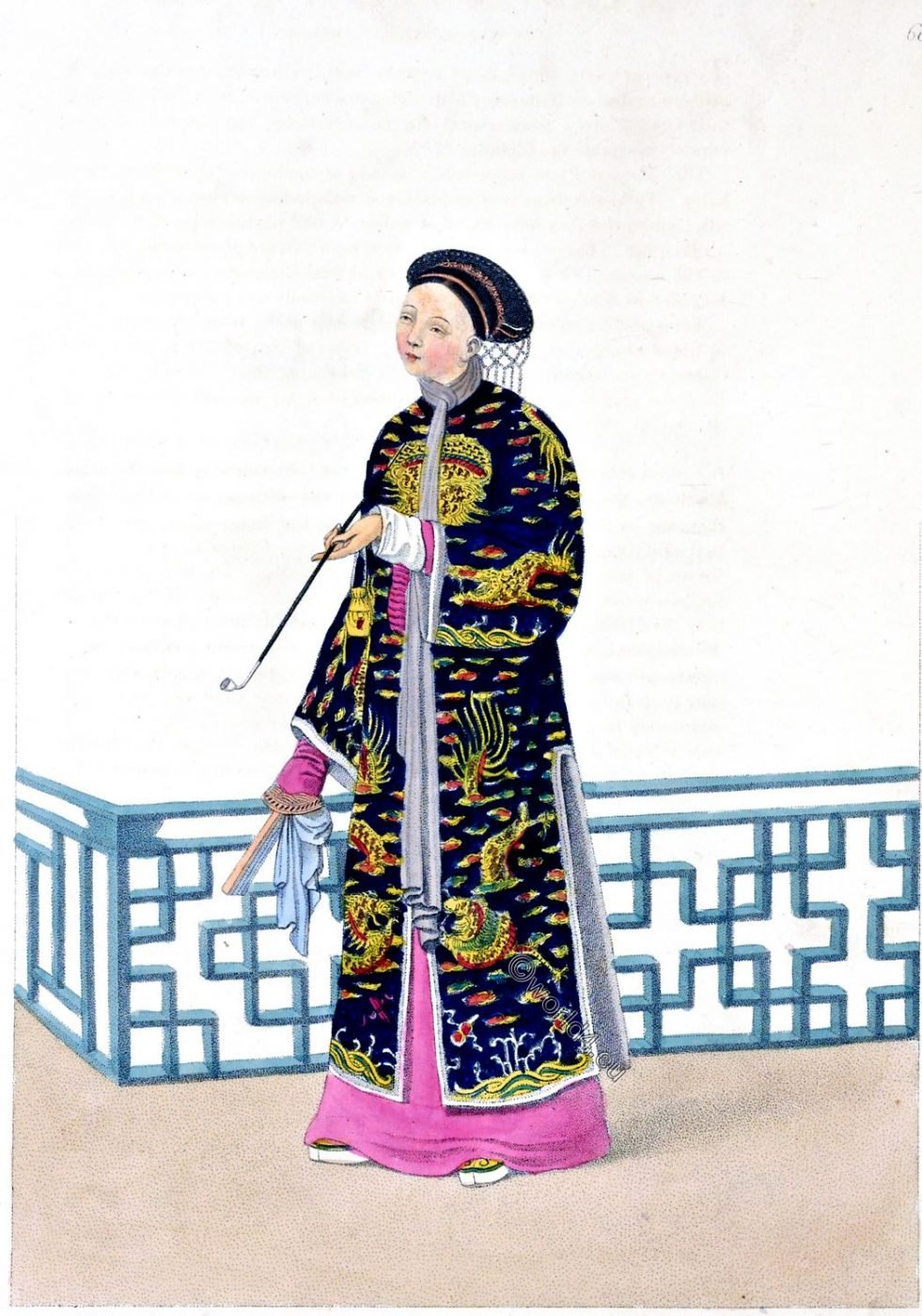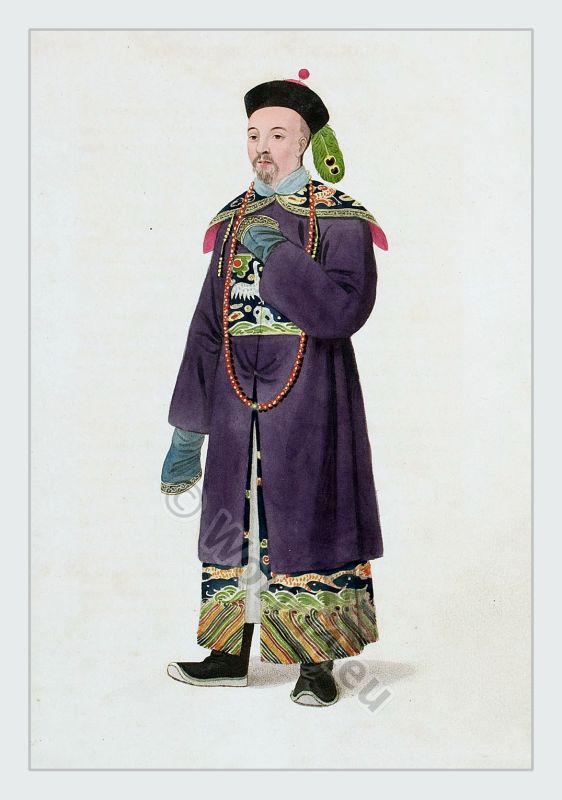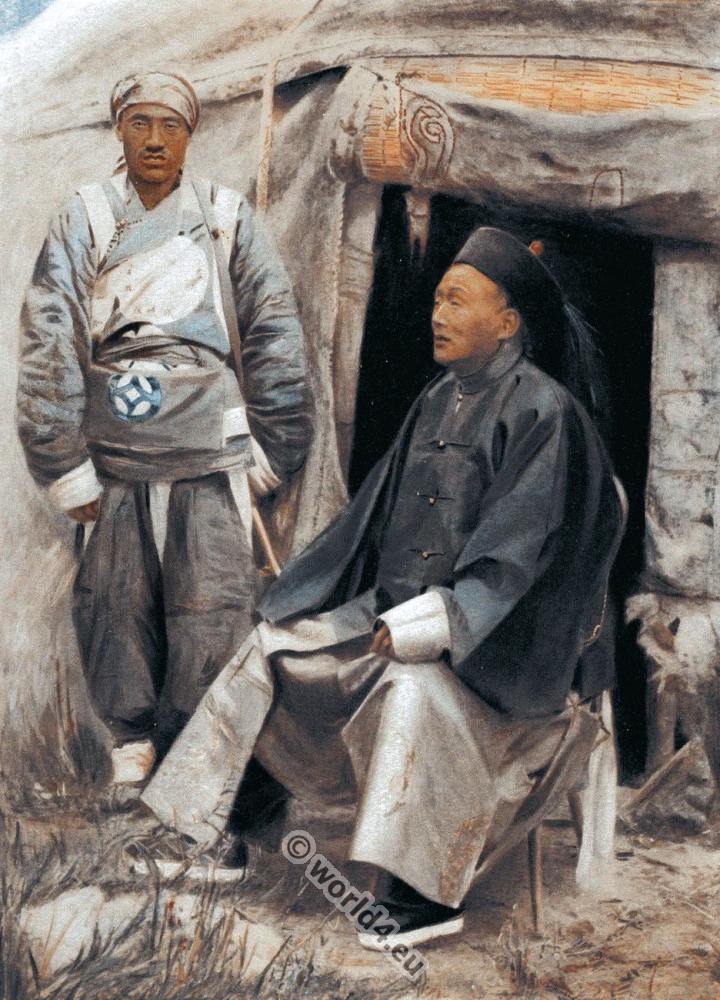
A LADY OF DISTINCTION, IN HER HABIT OF CEREMONY.
THIS is, properly, the figure of a Tartar lady. The women of that country are said to decline imitating their neighbors in the custom of misfashioning their feet; in every other respect-s-in manners, dress, and features-they accurately resemble the Chinese.
The annexed Plate represents a female of the highest class in her finest habit of representation. The outer dress is of embroidered satin, which is placed upon onc of silk; under this they have a kind of waistcoat, and next their persons is worn a silken net. They constantly wear drawers, which are of materials adapted to the season. Their gowns reach almost from the chin to the ground, the long sleeves conceal their hands, and their faces only are perceptible.
Transparent drapery, or clothes filled exactly to the shape, would be held in China as outrages upon decency; the police of that correct country never tolerating such public exhibitions. The fashions of the Chinese never vary; they are almost of antediluvian invention, and are perhaps emblematic of the stability of their affections.
Those ladies who are advanced in years confine themselves to dresses of the graver colours, such as dark violet or black. A tobacco-pipe and a handkerchief are frequently carried in their hands; with the use of the former they are by no means unacquainted, blending the fumes of that plant with the most fragrant oriental odors.
The Chinese women are familiar with the art of painting their skins, using a composition of white and red, which imposes a sort of enamel appearance upon their complexions. They pretend that the latter colour is of a less pernicious quality than what is used in Europe; but we must imagine that their joint association is equally efficacious, with any disguise of the kind, in destroying natural bloom, and inducing premature wrinkles. They do not however adopt factitious charms with any design to allure or to deceive the multitude by concealing the evil condition of their minds or of their bodies.
The motive originates from the anxiety to render themselves more excellent in the eye of one man-that man the sole, acknowledged guardian of their happiness and of their existence. Upon this principle, the solicitous care of a Chinese lady to heighten her natural beauties, becomes in many cases as innocently superfluous as it would be to attempt the brightening of the lustre of a polished gem, or improving the hue and perfume of a rose.
The features of these women are remarkably small and feminine; their eye, emulate the colour and vivacity of those of the antelope. A Chinese has only one wife, but generally as many handmaids to wait upon her as his fortune will support. A state of virtuous widowhood is held in high esteem, and this esteem is secured by her having very little intercourse with society, and by being attended only by domestics of her own sex.
After the manner of other Asiatics, modesty and taciturnity are the peculiar ornaments of Chinese ladies, who are brought up in seclusion and retirement; and who, like many curious flowers, born equally to blush unseen, are reared by their proprietors, come to maturity, fade, and die in their possession.
Source: The costume of China by George Henry Mason, Esquire, Major of his Majesty’s (Late) 102nd Regiment. London W. Miller, Old Bond Street, 1800.

Related
Discover more from World4 Costume Culture History
Subscribe to get the latest posts sent to your email.






